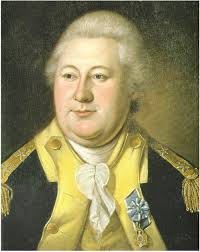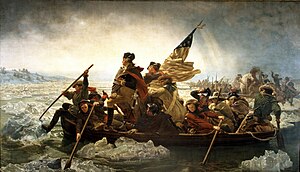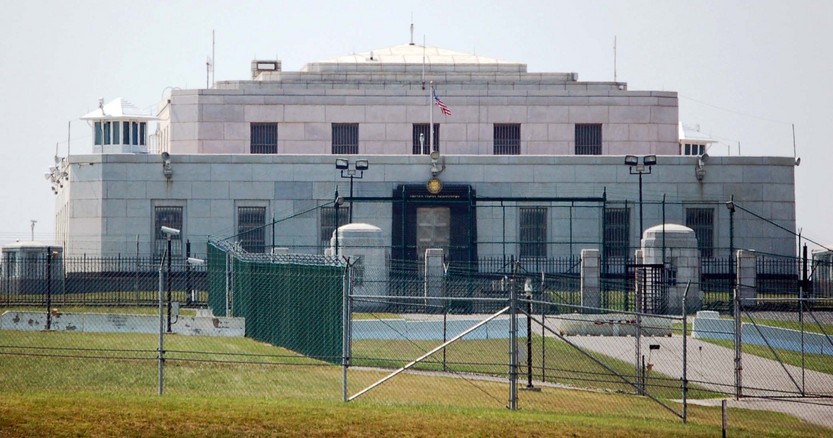
Canadians don’t get to talk about American military history enough. It’s a shame, too, because there’s a lot of it there – schoolchildren get to talk about the world wars and Native rebellions quite a bit, but there’s only one high-school course available in Ontario on American history. All the same, though, I love it, and I’ve been so curious about for quite some time – I’m hoping to take a trip south towards North Carolina in August, and I’m hoping to stop off at a number of Revolutionary and Civil War battlefields along the way.
So with this intro out of the way, let’s talk about one of the coolest fat guys to ever live, and who proved to be essential to breaking the siege of Boston and later to have Washington’s army win the war – Henry Knox.

Henry Knox
Born: July 25th, 1750, Boston, MA
Died: October 25th, 1806, Thomaston, MA
Occupation: Bookseller, military scholar, general
Henry Knox was the oldest son of William Knox, a shipbuilder who lost all his money and subsequently abandoned his family; with his dad out of the picture, Henry was forced to leave formal schooling at age twelve, despite being quite bright. He took a job as a clerk in a bookstore, where the owner allowed him to borrow any books he wanted on all subjects; he ended up teaching himself French, advanced math, and philosophy, but was most fascinated with history in all forms. Besides being a smart dude, Knox was also tough as hell – as a youth, he was renowned for being one of the toughest fighters in all of Boston’s various street gangs. He later joined the Boston Grenadier Corps at age 18 and later fought in the Battle of Bunker Hill. When George Washington arrived in town in 1775, however, that the legend of Henry Knox was really born. Here’s why he’s such a badass:
- When Washington first arrived with his army, he met Henry Knox, and immediately struck up a friendship. He discussed the need for artillery with Knox, and was impressed with Knox’s knowledge on the subject – despite the fact that the man had never even operated a cannon in his life. Washington made Knox a colonel, and commissioned him in charge of the Continental Army’s artillery.
- Minor problem: the Continental Army had zero artillery. No cannons, whatsoever. They did, however, have an opportunity. They had the possibility of moving the artillery from the captured Fort Ticonderoga, in northern New York, in order to repurpose them.
- Some more problems: the artillery in the captured fort was broken to shit, and nobody in the army knew how to repair it. Also, the fort was three hundred miles away from Boston, and it was the middle of winter. However, none of this stopped Knox in his crazy plan.
- Through Knox’s leadership, a convoy took fifty cannons pulled on ox-carts through deep snow, ice-covered rivers, and unmarked trails, crossing the Hudson River and the Berkshire Mountains before making their way to the Dorchester Heights. It was an incredibly difficult journey, made even more perilous by the fact that the convoy was essentially unguarded, making them very vulnerable if they had happened to encounter British forces along their journey. A two-week journey turned into six, and even with cannons faling into water after crashing through ice, the convoy was able to retrieve every single one in the end.

- Knox’s salvaging of the Fort Ticonderoga cannons won the Battle of Bunker Hill, thanks to the gutsy move to retrieve the artillery; he also trained his entire company of 1,200, all of whom had never shot a gun before, on how to operate all of them.
- Knox’s work in Boston led to him following Washington to New York and New Jersey, where he was promoted to brigadier-general, where after narrowly escaping capture in the Battle of Manhattan, proved himself to be invaluable in his work in crossing the Delaware during that famous battle; he not only brought over all infantry, cavalry and supplies in the boats without any loss… but also brought 18 cannons with the army as well, averaging about 2400 pounds each. And as we all know, the Hessians got their asses kicked in Trenton.

- Henry Knox also was essential in the victory at Yorktown, the final battle of the Revolution, in 1781, where he ordered his artillery to ricochet their cannonballs off the ground, and have them bounce around and cause mayhem; he earned the rank of major-general for this clever win.
- In between his military exploits, he also founded the first military school in the United States in 1779, which was considered the precursor to the West Point Academy. He also founded a factory in Springfield, MA to built artillery and armaments until it finally closed in 1968, when it was last producing M-14 rifles.
- In 1785, Henry Knox became the first Secretary of War for the United States, and his work helped to create a permanent United States Navy. By 1795, he retired from government, and retired to his estate in what is now Maine. He died in 1806 from a ruptured appendix.
- Fort Knox, home to the majority of federal gold reserves, is named in honour of this man.

Pretty impressive for a 300-pound dude who was self-schooled to get this much done in his lifetime. Whether it was through academics, warfare, or his well-honed fists, Henry Knox was an extremely important figure to the American Revolution, and his rise from poverty to the history books is well-deserved thanks to his ingenuity.
Prolly shouldnta tell a Beaver this but; While Fort Knox definitely holds a lot of gold—about 147 million ounces—the largest gold stockpile in the US is far larger. It’s the Federal Reserve Bank Depository in Manhattan, storing 212 million ounces—about 6,700 tons of gold.
The moah u no.
Knox really know how to put his canon in a dingy.
There was a very good documentary on him on, I believe, the History Channel (before it became the Not Anything to Do With History Channel).
Well done.
he ended up teaching himself French, advanced math, and philosophy
Nerd.
I didn’t know you renamed the series “Historical Fatasses”…
Just kidding. Well done.
The portrait always adds 10-20 lbs.